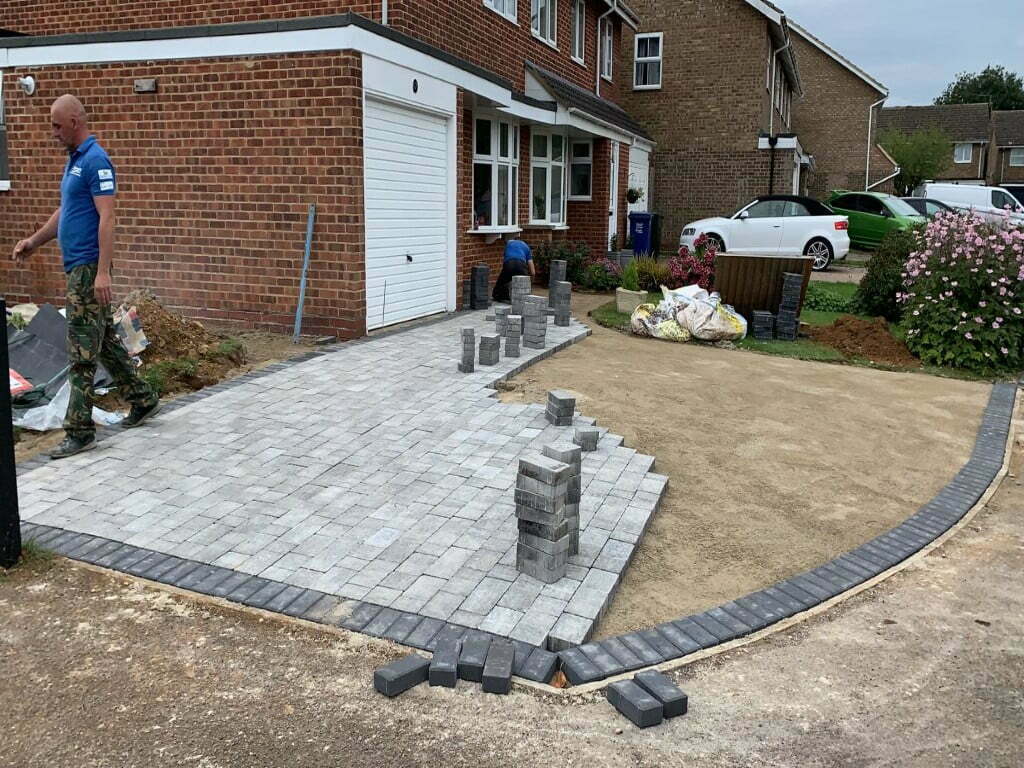Block paving is the most common type of surfacing that we install for customers. It is durable, provides value and does not require much maintenance making it a very popular choice.
Since block paving is around many years, it has a good documented process for the installation of it and provided it is laid correctly, it will provide long term value for you.
As with any driveway work, the first step is to excavate out the area on which we will be laying block paving on. This includes any extensions to the area into the lawn areas or over other surfaced areas.
Excavation should always be a minimum of 8 inches on a driveway especially if it’s virgin ground like a lawn or a garden conversion to a driveway.
If it’s a conversion or extension, a drainage solution will have to be installed to collect the surface water. We recommend using channel Aco drains for this as they can be easily cleaned every year and provides a large catchment area for the surface water.
If you have opted for a permeable driveway, you will not require a drainage system but the excavation and base installation will be significantly deeper to approx. 12 inches and the base will require Type 3 MOT instead of a Type 1 MOT base.
Once the excavation has been completed on the driveway area, a new base foundation will be laid into it along with a permeable weed block. This should be a minimum of 6 inches to allow sufficient depth and it will be machine-rolled by us to lock in place.
Kerbing, front door steps, recessed covers and similar are laid at this stage ensuring the height set on them will match the finished height of the block paved driveway.
River washed sharp sand is laid on top of the base foundation and we will screed the levels to make sure the right surface water direction is set to direct the surface water off of it. Block paving is slightly permeable so a large portion of the water will drain down through the gaps.
Block paving is then laid on top of it in either a 45° pattern or 90° pattern which is generally pulled by a string line off the house to set the angle.
The block is cut using a block paving splitters at this stage and any open edges of block paving is haunced up in concrete to make sure it does not shift or move.
Kiln dried sand is used to joint the block paving or Dansand depending on the requirements and we will machine vibrate compact the block paving using a whacker plate.
The driveway area will now be cleaned off and topped up once more with either kiln dried sand or Dansand. You can now start using your new driveway including parking the car on it!
If you would like a free estimate for a new paved driveway, why not call Abel Driveways LTD on 01483 342767 or you can learn more about our block paving services to see what options we can provide to you.
